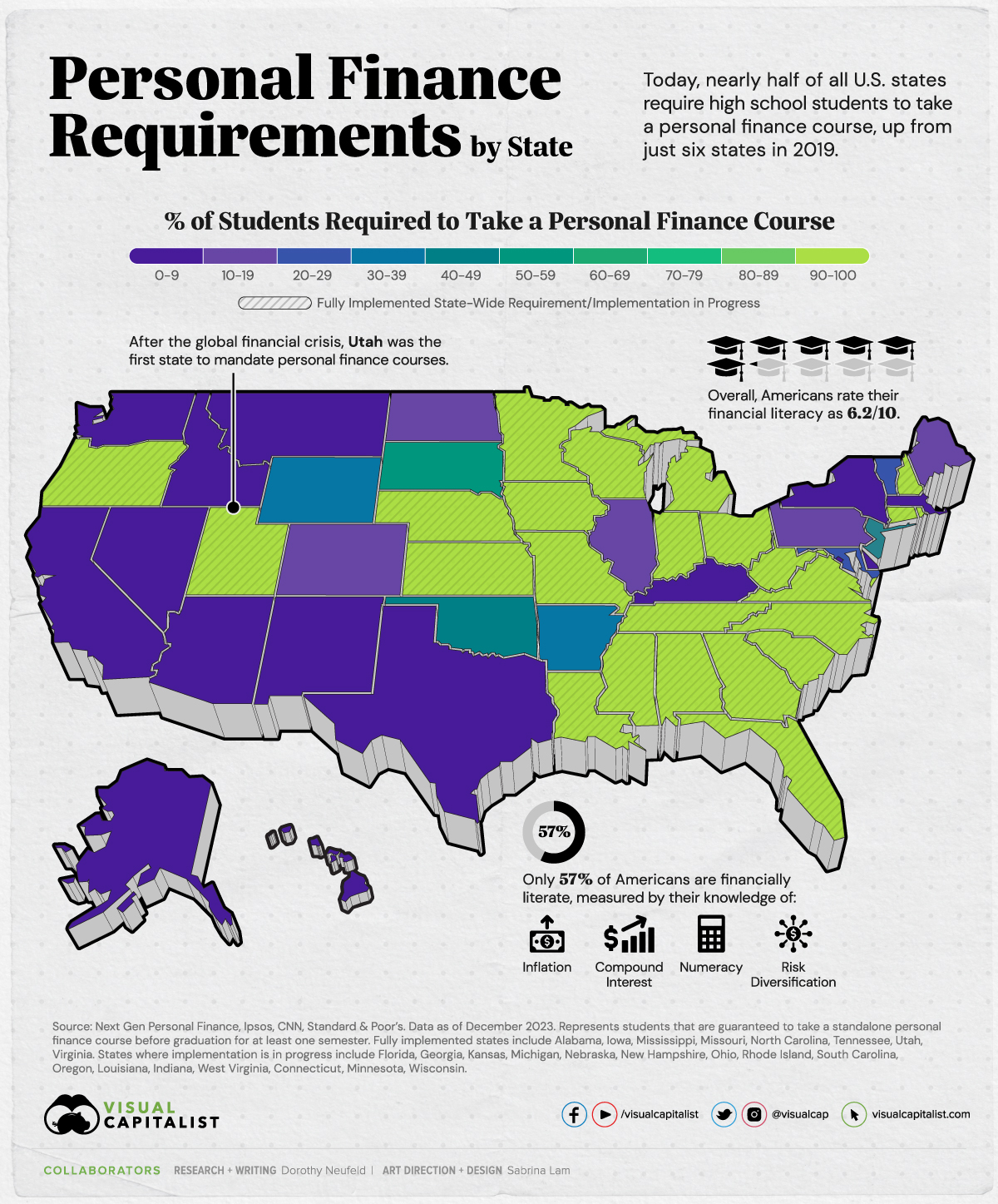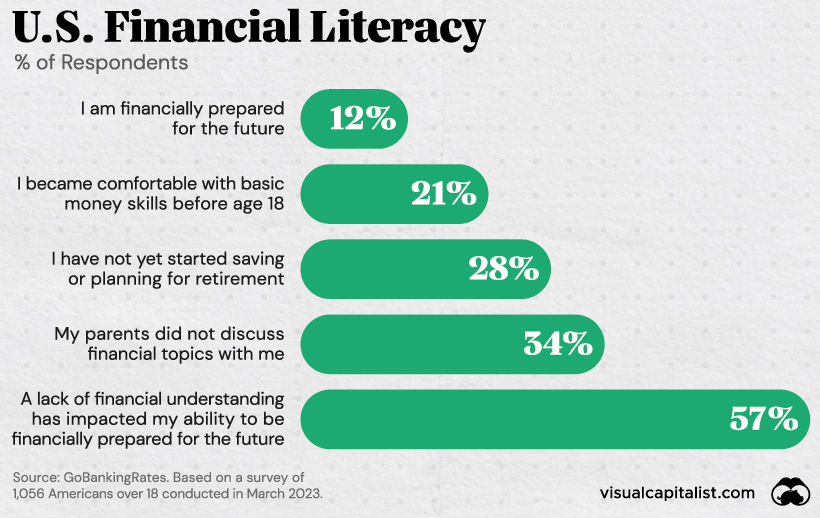
Personal Finance Requirements, by State
What happens when 600 kindergartners are given $50 to save for college?
In 2011, low-income students in San Francisco were given $50 to put in a bank account through a personal finance program that covered financial topics and encouraged families to save for college. By 2023, the average balance was $1,422, or 28 times the starting balance.
With soaring college costs and low financial literacy levels in the U.S., it highlights the role of financial education and how it can impact a person’s future. The above graphic shows personal finance course requirements by state in December 2023 based on data from Next Gen Personal Finance.
How Many Students Take a Personal Finance Course?
For many years, personal finance courses played a minor role in U.S. high schools.
While these courses were offered, often they had to compete with finite resources: schools must choose where classroom time is allocated.
It was not until 2008 that Utah became the first state to mandate high school students to take a personal finance course to graduate. By 2019, six states made this a requirement. Since then it has risen to 24 states as of this year, covering more than 50% of the country’s student population.
The table below shows the percent of high school students who must take a personal finance course over one semester in order to graduate, by state:
| U.S. State | % of Students Required to Take a Personal Finance Course |
|---|---|
| Alabama | 100% |
| Alaska | <1% |
| Arizona | 1% |
| Arkansas | 30% |
| California | <1% |
| Colorado | 13% |
| Connecticut | 100% |
| Delaware | 6% |
| Florida | 100% |
| Georgia | 100% |
| Hawaii | 0% |
| Idaho | 2% |
| Illinois | 14% |
| Indiana | 100% |
| Iowa | 97% |
| Kansas | 100% |
| Kentucky | 4% |
| Louisiana | 100% |
| Maine | 16% |
| Maryland | 27% |
| Massachusetts | 6% |
| Michigan | 100% |
| Minnesota | 100% |
| Mississippi | 99% |
| Missouri | 100% |
| Montana | 8% |
| Nebraska | 100% |
| Nevada | 3% |
| New Hampshire | 100% |
| New Jersey | 45% |
| New Mexico | <1% |
| New York | 3% |
| North Carolina | 95% |
| North Dakota | 12% |
| Ohio | 100% |
| Oklahoma | 43% |
| Oregon | 100% |
| Pennsylvania | 17% |
| Rhode Island | 100% |
| South Carolina | 100% |
| South Dakota | 57% |
| Tennessee | 100% |
| Texas | 3% |
| Utah | 100% |
| Vermont | 29% |
| Virginia | 100% |
| Washington | 2% |
| Washington D.C. | 0% |
| West Virginia | 100% |
| Wisconsin | 100% |
| Wyoming | 33% |
Fully implemented states include Alabama, Iowa, Mississippi, Missouri, North Carolina, Tennessee, Utah, Virginia. States where implementation is in progress include Florida, Georgia, Kansas, Michigan, Nebraska, New Hampshire, Ohio, Rhode Island, South Carolina, Oregon, Louisiana, Indiana, West Virginia, Connecticut, Minnesota, Wisconsin.
Wisconsin became the most recent state to implement this requirement as of December. Overall, eight states have fully implemented programs for high school students to take a personal finance course for graduation and 16 programs are currently in progress.
Financial Literacy: Where Do Americans Stand Today?
Roughly six in 10 of Americans are financially literate, measured by their knowledge of inflation, numeracy, compound interest, and risk diversification.
Separately, many Americans do not feel financially prepared for the future, and over a third of respondents did not discuss financial topics with their parents growing up.

We can see that gaps exist when it comes to financial knowledge, which can have consequences—especially for a person’s future financial stability. For many reasons, broadening the scope of financial education may be one way to encourage smarter financial decisions in terms of how a person saves and invests through their life.
The post Mapped: Personal Finance Requirements, by State appeared first on Visual Capitalist.